Space
Why was Pluto removed from the list of planets in the solar system?
Published
4 months agoon
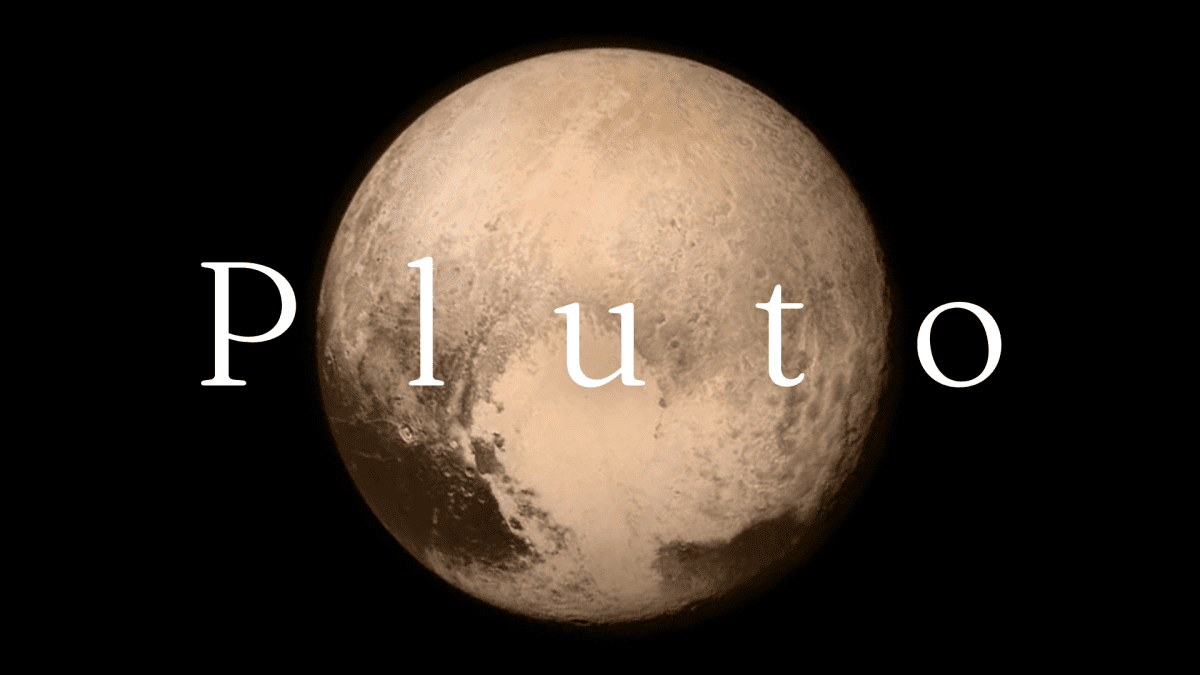

Why was Pluto removed from the list of planets in the solar system?
Our understanding of the solar system changed forever on August 24, 2006. At that time, the International Astronomical Union (IAU) researchers agreed to reclassify Pluto, changing the status of this object from a planet to a dwarf planet. This decision provoked a lot of anger and caused the textbooks to be rewritten. The demotion of the former ninth planet of the solar system is still controversial after more than 17 years.
Currently, the discussion about Pluto shows the problems in defining the concept of “planet”. The International Astronomical Union defines a planet as a celestial body that orbits the Sun with a nearly spherical appearance and, in most cases, clears the vicinity of its orbit of debris from other bodies. However, this set of criteria has not been universally agreed upon.
Earth and even Jupiter, despite their large size, have not cleared many asteroids from their orbital regions. In addition, there are small worlds such as Ceres that are spherical and revolve around the Sun, and are not considered planets.
-
After all, what is a planet?
-
A planetary puzzle
-
NASA’s New Horizons mission and the debate over the planet again
-
Can Pluto become a planet again?
-
What is the significance of Pluto being a planet?
Pluto’s demotion raises larger issues about how to define everybody in the solar system, or even space more generally. This incident shows that science sometimes cannot divide objects into easy categories; Because if the definition of planet is expanded again, it is not clear how we should evaluate the numerous non-spherical bodies that orbit the Sun. Decisions about this may even call into question the asteroid belt (the huge band of small objects between Mars and Jupiter). Or what happens if a planet somehow breaks into pieces?
The discussion about Pluto shows the problems in defining the concept of “planet”.
Meanwhile, while the Pluto debate began almost 20 years ago, many still don’t fully understand all the controversy and why Pluto lost its planetary status. But the change in the number of planets in the solar system from nine to eight (at least according to the standard IAU definition) was long in the making and highlighted one of science’s greatest strengths: the ability to change seemingly fixed definitions in light of new evidence.
After all, what is a planet?
The word planet in English (Planet) goes back to ancient times and is derived from the Greek word Planetes meaning “wandering star”. The five classical planets—Mercury, Venus, Mars, Jupiter, and Saturn—are visible to the naked eye and move in strange paths across the sky compared to the much more distant background stars.
After the advent of telescopes, astronomers discovered two new planets, Uranus and Neptune. These two distant worlds are very dim and cannot be seen with the naked eye. It should be kept in mind that the discussed definition of a planet follows the Greek-Roman tradition and the definitions of the International Astronomical Union are based on it. In ancient times, the planets were observed with the naked eye all over the world and had different names in each culture.
When astronomers discovered Ceres in the asteroid belt in 1801, it was classified as a “planet” by the scientific community at the time. But the situation began to change; Because further measurements showed that Ceres is smaller than any other planet seen so far. This mass then entered a group of rocky bodies called “asteroids”, of which we now know hundreds of thousands of examples in the asteroid belt alone. Today, Ceres is known as a dwarf planet.
 Size comparison of Pluto and its moon Charon (bottom right) with the Moon and Earth.
Size comparison of Pluto and its moon Charon (bottom right) with the Moon and Earth.
Pluto was discovered and classified as a planet in 1930 (11 years after the founding of the International Astronomical Union). At the time, Clyde Tamba of the Lowell Observatory in Arizona compared photographic plates of the sky on separate nights and noticed a small dot moving back and forth across the starscape. However, the latest candidate for the ninth planet of the solar system was immediately considered a strange object. Pluto’s orbit is so elliptical, or eccentric, that it brings the object closer to the Sun than Neptune in 20 years of its 248-year journey. Pluto’s orbit is also tilted relative to the ecliptic, or the plane on which the other planets in the solar system rotate.
If Pluto is a planet, then is Eris also a planet?
In 1992, scientists discovered the first Kuiper Belt object named 1992 QB1. This small body orbits the Sun in the vicinity of Pluto and beyond the orbit of Neptune. Soon many similar objects were discovered, and a belt of small, icy worlds similar to the asteroid belt between Mars and Jupiter was revealed. Pluto remained king of this region until, in July 2005, astronomers discovered the distant object Eris, which was initially thought to be larger than Pluto.
A planetary puzzle
After the discovery of Eris, researchers had to ask themselves these questions: If Pluto is a planet, then is Eris also considered a planet? What about all those other icy bodies in the Kuiper Belt or smaller bodies in the Asteroid Belt? Where exactly is the dividing line for classifying an object as a planet? A word that once seemed straightforward and simple suddenly became strangely complicated.
Then intense debates ensued and new proposals were made to define the planet. Brian Marsden, a member of the IAU executive committee responsible for finding a new meaning for the planet, told Space.com in 2005: “Every time we think some of us are reaching a consensus, then someone says something and shows that it’s clear.” It’s not like that.”
A year later, astronomers were still nowhere near a solution, and the dilemma hung over the IAU General Assembly in Prague in 2006 like a dark cloud. At this conference, the researchers had eight days of intensive discussion and presented four different proposals. A controversial proposal would have brought the total number of planets in the solar system to 12 by adding Ceres, the largest asteroid, and Pluto’s moon, Charon.
Michael Brown, an astronomer at Caltech University and discoverer of Eris, called the proposal “complete confusion.”
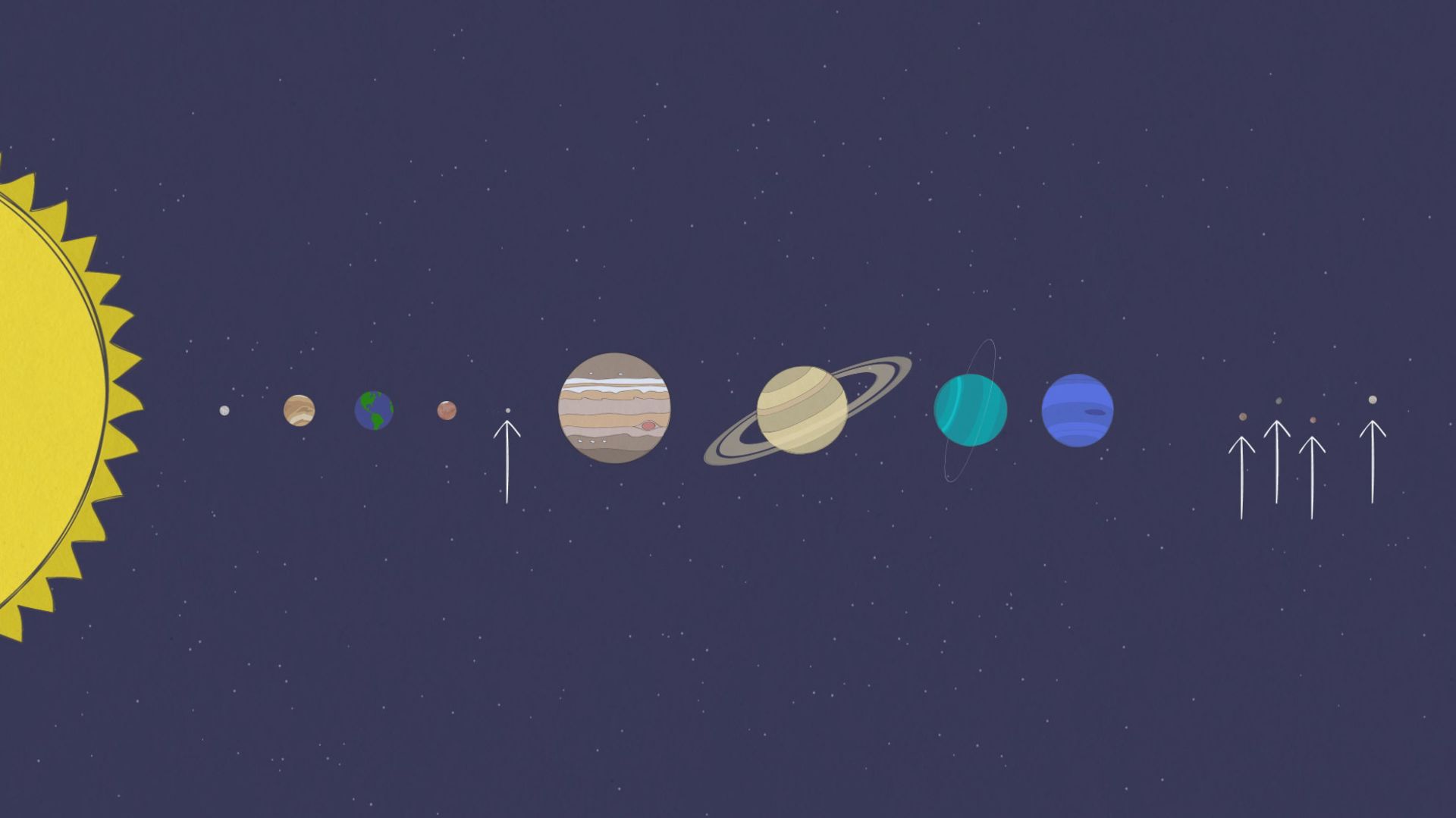 The globular objects in the Kuiper Belt (right arrows) and Ceres (left arrow) are now called dwarf planets.
The globular objects in the Kuiper Belt (right arrows) and Ceres (left arrow) are now called dwarf planets.
Near the end of the conference, the remaining 424 astronomers voted to create three new classifications for objects in the solar system. From then on, only Mercury and Neptune and the large worlds in between were considered planets. Then Pluto and its counterparts (round bodies that shared their orbits with other bodies) were called dwarf planets. All other objects that orbit the Sun are known as minor solar system bodies.
NASA’s New Horizons mission and the debate over the planet again
A group of experts did not take the decision of their colleagues seriously. Alan Stern, the senior researcher of NASA’s New Horizons spacecraft, which passed by Pluto in 2015, regretted the demotion of the former ninth planet of the solar system and said that less than five percent of the world’s 10,000 astronomers participated in the International Astronomical Union vote.
New Horizons was considered an important turning point in the planetary debate. The spacecraft’s quick flyby of Pluto revealed a world far more dynamic than anyone imagined. Large mountains, impact craters, and signs of liquid nitrogen flowing on the surface all suggest a world that has undergone significant geological changes since its formation. People like Stern have argued that Pluto should be considered a planet on that basis alone.
New Horizons was considered an important turning point in the planetary debate
Images taken from Pluto’s moon Charon also show a very dynamic place; Including the red cap on its pole, which apparently changes its appearance with the slow seasonal change in the solar system. Most importantly, Pluto has several moons; While Mercury and Venus, the two inner planets of the solar system, do not have even one moon. Many asteroids and dwarf planets also have moons, complicating the definition of a planet.
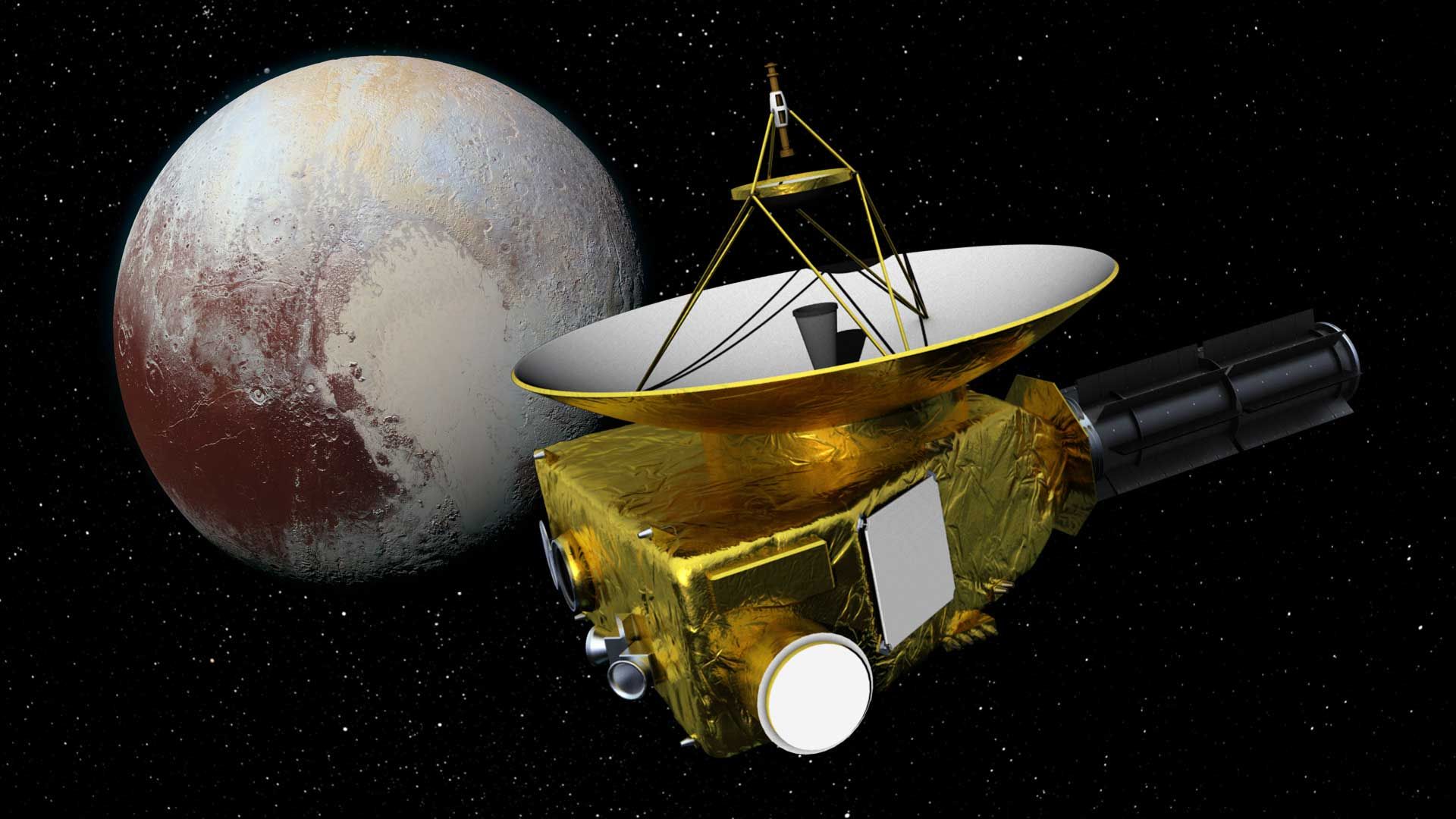 New Horizons is the only spacecraft that has ever had a close encounter with Pluto.
New Horizons is the only spacecraft that has ever had a close encounter with Pluto.
Many people share views with Stern and other like-minded experts. In 2014, shortly before New Horizons flew past Pluto, experts at the Harvard-Smithsonian Center for Astrophysics (CfA) in Cambridge, Massachusetts, debated different definitions of the planet. Owen Gingerich, a science historian who chairs the IAU’s Planet Definition Committee, stated that “planet is a culturally defined term that changes over time.” But most of the audience watching the CfA debate chose a different definition that would have put Pluto back among the planets.
Alternative classification schemes continue to be proposed. A 2017 proposal defined a planet as “a spherical body in space that is smaller than a star.” This definition makes Pluto a planet again; But it does the same with Earth’s moon, as well as many other moons in the solar system, bringing the total number of officially recognized planets to 110. A year later, Stern wrote an op-ed in The Washington Post with David Greenspoon, senior scientist at the Planetary Science Association, arguing that the International Astronomical Union’s definition was hastily adopted and problematic and that astronomers should rethink their ideas.
Can Pluto become a planet again?
Numerous requests from experts have so far been ignored, and the International Astronomical Union is unlikely to address the dispute anytime soon. “The simple fact is that Pluto was misclassified at the time of discovery,” wrote American astrophysicist Ethan Siegel in response to Stern and Greenspoon. “This crime has never been in the same position as the other eight worlds.”
Michael Brown also says: “As a result, Pluto is still not a planet, and in fact it never was.” We just got it wrong for 50 years and now we know better. Missing Pluto is not really a very good argument. “The reality is something else and we have to deal with it.”
What is the significance of Pluto being a planet?

These days, children who weren’t even born when Pluto was a planet, ask what the definition of a planet even matters. Why do we have to discuss whether Pluto is a planet or not? Astronomers say there’s no simple answer, and we may have to look beyond our own solar system to understand what makes an object a planet or not.
More than five thousand exoplanets or worlds beyond the solar system have been discovered so far. This vast collection ranges from Earth-sized “super-Earths” to Uranus and “hot Jupiters” orbiting their star closely, to a range of worlds of other sizes. The types of planetary environments that must be considered are changing rapidly.
It seems unlikely that the International Astronomical Union will address the Pluto controversy anytime soon
What the increasing knowledge of the types of exoplanets shows us is that each star system may have its own unique environment. Although it can be more generally stated that stars can form planets from the collapse of gas and dust in their environment, the unique dynamics that control the process of planet formation are much more complex. For example, are multiple stars involved in this process? How much dust is there? Is there a black hole or supernova that will destroy the precious dust and gas needed to grow planets?
Even if planets are lucky enough to grow large, how they interact with other planets early in their formation is poorly understood. The worlds interact with each other, and the mutual gravitational effect between them causes the planets to move away from their parent star, close to it, or in some cases, fall out of the system altogether.
What all these explanations suggest is that our definition of a planet should probably be more contextual to account for the number of possible scenarios for the formation of worlds. Perhaps the planets depend on a specific formation condition or specific regions. All we seem to know for sure is that as more and more data is collected, the planet definition and the debate that Pluto has sparked will continue for some time to come.


You may like
-




Europa Clipper, NASA’s flagship probe was launched
-

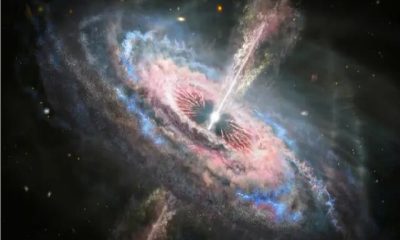


Dark matter and ordinary matter can interact without gravity!
-




James Webb Space Telescope deepens cosmology’s biggest controversy
-

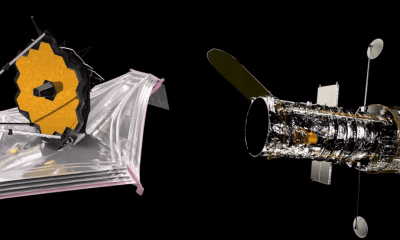


James Webb vs. Hubble
-

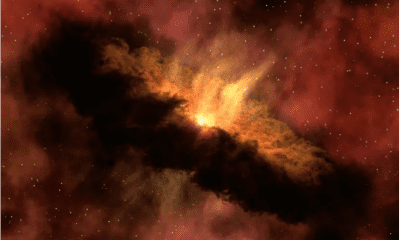


There is more than one way for planets to be born
-




Why is Jupiter one of the first targets of the James Webb Space Telescope?


Europa Clipper, NASA’s flagship probe was launched
After years of waiting, NASA’s Europa Clipper probe was finally launched on Monday at 7:36 p.m. Iran time from the Kennedy Space Center on top of SpaceX’s Falcon Heavy rocket and began a major astrobiology mission to Europa, the potentially habitable moon of Jupiter.
As SpaceX’s massive rocket powered by 27 powerful Merlin engines lifted off from pad 39A, NASA live broadcast reporter Dron Neal said, “The launch of Falcon Heavy with Europa Clipper will reveal the secrets of the vast ocean beneath the icy crust of Europa, Jupiter’s moon. It has been hidden, it will reveal.”
The engines of the two side boosters of the Falcon Heavy were shut down and separated from the central booster approximately three minutes after the flight. The central booster continued to fly for another minute, and then in the fourth minute of the launch, the separation of the upper stage from the first stage was confirmed. Finally, 58 minutes later, Europa Clipper was injected into interplanetary orbit as scheduled. A few minutes later, the mission team made contact with the probe, and people in the control room cheered and applauded.
Falcon Heavy’s unique launch
The launch of NASA’s new probe was delayed due to some mishaps. NASA and SpaceX initially planned to launch the Europa Clipper mission on Thursday, October 10; But with powerful Hurricane Milton hitting Florida’s Gulf Coast on Wednesday evening, a delay in the launch became inevitable. NASA shut down Kennedy Space Center to deal with the storm, and Europa Clipper was placed inside SpaceX’s hangar near Launch Pad 39A.
The recent launch was Falcon Heavy’s 11th flight overall and its second interplanetary mission. Also, this was the first flight of the Falcon Heavy, when all three boosters of the first stage of the rocket were deployed.
Typically, the Falcon Heavy and Falcon 9 first-stage boosters store enough fuel to perform landing maneuvers for recovery and reuse in the future; But Europa Clipper needed all the power that Falcon Heavy could provide in order to make it on its way to the Jupiter system.
A long way to the launch pad
In late 2015, the US Congress directed NASA to launch Europa Clipper using the Space Launch System (SLS), NASA’s massive rocket. SLS was still under construction at the time and was several years away from reaching the launch pad. The delay in completing the construction of this powerful rocket and NASA’s need to assign at least the first three versions of SLS to the Artemis lunar mission caused the Europa Clipper launch date to be in an aura of uncertainty.
In the 2021 House budget draft for NASA, the agency was directed to launch Europa Clipper by 2025 and, if possible, with SLS. However, due to the unavailability of the Space Launch System, NASA had to go to SpaceX’s Falcon Heavy. This decision was not without cost. As the most powerful rocket ever used in an operational mission, SLS can send Europa Clipper directly to the Jupiter system in less than three years.
Europa Clipper will use the gravitational assistance of Mars and Earth on its way to the Jupiter system
Now, even in Falcon Heavy’s fully disposable mode, the Clipper’s trip to Europe takes almost twice as long. The probe should make a flyby of Mars in February 2025 and a flyby of Earth in December 2026 to gain enough speed to reach its destination in April 2030.
Missile problems were not the only obstacles facing Europa Clipper on its way to the launch pad. For example, the rising costs of this five billion dollar probe forced NASA to cancel the construction of one of the probe’s science instruments. This instrument, named “Identification of Europa’s internal features using a magnetometer” (ICEMAG), was designed to measure Europa’s magnetic field.
Then in May 2024, NASA found that transistors similar to those used in Europa Clipper, which are responsible for regulating the probe’s electricity, were “failing at lower-than-expected radiation doses.” Following this discovery, NASA conducted more tests on the transistors and finally concluded in late August that these components could support the initial mission in the radiation-rich environment around Jupiter.
Ambitious mission to a fascinating moon

NASA/Jet Propulsion Laboratory-Caltech
Europa Clipper is one of NASA’s most exciting and ambitious flagship missions, and it has impressive features. For example, the mission probe is the largest spacecraft NASA has ever built for a planetary mission. Europa Clipper weighed almost 6,000 kg at the time of launch and will be more than 30 meters long (bigger than a basketball court) by opening its huge solar panels in space.
Clipper’s Europa destination is also a prominent location: Europa, one of Jupiter’s four Galilean moons. The moon is covered with an icy outer shell, which scientists believe hides a vast ocean of salty liquid water. For this reason, Europa is considered one of the best places in the solar system to support alien life.
In early 2012, studies began to look for potential plumes of water rising from Europa’s surface. Some researchers theorize that those water columns and vents from which the columns protrude may contain evidence of life living beneath the moon’s icy crust. However, NASA scientists have made it clear that Europa Clipper is not looking for extraterrestrial life in Europa; Rather, this probe will only investigate the potential of the submoon water environment to support life.
“If there’s life on Europa, it’s going to be under the ocean,” Bonnie Buratti, senior Europa Clipper scientist at NASA’s Jet Propulsion Laboratory, said in September. As a result, we cannot see it.” “We will be looking for organic chemicals that are prerequisites for life on the surface of the moon,” Borrati added. There are things we can observe; such as DNA or RNA; But we don’t expect to see them. As a result, [the probe] is only looking for habitable environments and evidence for the ingredients of life, rather than life itself.”
NASA scientists have made it clear that Europa Clipper is not looking for extraterrestrial life in Europa
Europa Clipper will collect data using a suite of nine scientific instruments, including visible and thermal cameras, several spectrometers, and special equipment to identify Europa’s magnetic environment. As stated on NASA’s Europa Clipper page, the probe will help scientists achieve three main goals:
- Determining the thickness of Europa’s ice sheet and understanding how Europa’s ocean interacts with the lunar surface.
- Investigating the composition of Europa’s ocean to determine whether it has the materials necessary to form and sustain life.
- Studying the formation of Europe’s surface features and discovering signs of recent geological activities; such as the sliding of crustal plates or the discharge of water columns in space.
Europa Clipper also transports Earth’s culture to the Solar System. A piece called “In Praise of Mystery: A Poem for Europe” by Edda Lemon, a famous American poet, is engraved in the artist’s own handwriting on a metal plate. In addition, the probe carries a coin-sized chip that contains the names of 2.6 million inhabitants of planet Earth.
6-year journey

Johns Hopkins University Applied Physics
If all goes according to plan, Europa Clipper will enter Jupiter’s orbit in April 2030. When the probe gets there, it will use up 50-60% of its 2,722 kg of fuel by performing an injection maneuver for 6-8 hours.
The injection maneuver puts Europa Clipper in an elliptical orbit around the gas giant. A series of long maneuvers will then be performed to align the trajectory so that the probe can fly by Europa more than 45 times and study it closely. In fact, Europa Clipper will remain around Jupiter throughout its mission; Because according to the launch environment of Europa, it will be very dangerous for the spacecraft to go around the moon.
If all goes according to plan, Europa Clipper will enter Jupiter’s orbit in April 2030
The first flight over Europe will not take place before the spring of 2031. NASA will use the first pass to make further corrections to Europa Clipper’s trajectory in preparation for the probe’s first science mission. With the start of scientific flybys in May 2031, Europa Clipper will aim its array of sensors towards the far hemisphere from Jupiter and will approach the surface of the moon up to 25 km. The second science campaign will begin two years later, in May 2033, in the Jupiter-facing hemisphere of Europa.
The end of the Europa Clipper mission is set for September 2034. At that time, NASA will crash the spacecraft into Ganymede, another Galilean moon of Jupiter. This disposal strategy was chosen because Ganymede is considered a relatively poor candidate to host life, and the mission team wanted to make sure they did not contaminate potentially life-hosting Europa with terrestrial microbes.
Space
Dark matter and ordinary matter can interact without gravity!
Published
2 weeks agoon
01/10/2024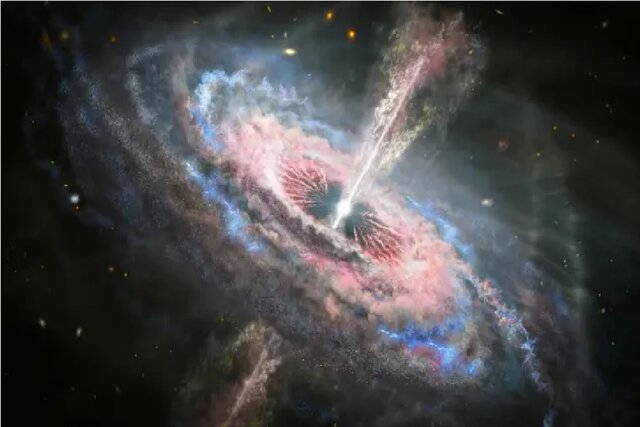

Preposition: For each; per.
Noun: A topology name.
Noun: which has mass but which does not readily interact with normal matter except through gravitational effects.
Adverb: Beyond all others.
Preposition: For each; per.
Noun: A topology name.
Dark matter and ordinary matter can interact without gravity!
Why is dark matter associated with the adjective “dark”? Is it because it harbors some evil forces of the universe or hidden secrets that scientists don’t want us to know? No, it is not. Such fanciful assumptions may sound appealing to a conspiracy theorist, but they are far from the truth.
Dark matter is called dark because it does not interact with light. So when dark matter and light collide, they pass each other. This is also why scientists have not been able to detect dark matter until now; it does not react to light.
Although it has mass and mass creates gravity, this means that dark matter can interact with normal matter and vice versa. Such interactions are rare, and gravity is the only known force that causes these two forms of matter to interact.
However, a new study suggests that dark matter and ordinary matter interact in ways other than gravity.
If this theory is correct, it shows that our existing models of dark matter are somewhat wrong. In addition, it can lead to the development of new and better tools for the detection of dark matter.
Read more: There is more than one way for planets to be born
A new missing link between dark and ordinary matter
Dark matter is believed to have about five times the mass of normal matter in our universe, which helps hold galaxies together and explains some of the motions of stars that don’t make sense based on the presence of visible matter alone.
For example, one of the strongest lines of evidence for the existence of dark matter is the observation of rotation curves in galaxies, which show that stars at the outer edges of spiral galaxies rotate at rates similar to those near the center. These observations indicate the presence of an invisible mass.
Also, for their study, the researchers studied six ultra-dim dwarf (UFD) galaxies located near the Milky Way. However, in terms of their mass, these galaxies have fewer stars than they should. This means they are mostly made up of dark matter.
According to the researchers, if dark matter and normal matter interact only through gravity, the stars in these UFDs should be denser in the centers and more spread out toward the edges of the galaxies. However, if they interact in other ways, the star distribution looks different.
The authors of the study ran computer simulations to investigate both possibilities. When they tested this for all six ultra-dim dwarf (UFD) galaxies, they found that the distribution of stars was uniform, meaning that the stars were spread evenly across the galaxies.
This was in contrast to what is generally observed for gravitational interactions between dark matter and normal matter.
What causes this interaction?
The results of the simulations showed that gravity is not the only force that can make dark matter and normal matter interact. Such an interaction has never been observed before, and it could change our understanding of dark matter and dark energy.
However, this study has a major limitation. What caused the interaction between the two forms of matter is still a mystery. While the current study provides tantalizing hints of a novel interaction, its exact nature and underlying causes remain unknown. Hopefully, further research will clarify the details of such interactions.
This study was published in The Astrophysical Journal Letters.
Space
James Webb Space Telescope deepens cosmology’s biggest controversy
Published
3 weeks agoon
26/09/2024

How the James Webb Space Telescope deepens cosmology’s biggest controversy
Summary of the article:
- Almost a century ago, Edwin Hubble discovered the expansion of the universe and calculated the expansion rate or the cosmic constant.
- Since Hubble, many groups have tried to measure the expansion rate of the universe. However, the values they obtained differed from the theoretical predictions. This difference is called Hubble tension.
- Scientists today use three methods to measure the expansion rate of the universe: Cephasian variable stars, TRGB red giant stars, and JAGB asymptotic giants.
- However, the Hubble tension still exists, indicating that the methods for calculating the Hubble constant suffer from a systematic flaw.
- Researchers hope to be able to use the James Webb telescope in the coming years to achieve more accurate measurements of the universe’s expansion rate and thus resolve the Hubble tension.
Almost a century ago, Edwin Hubble discovered that the universe was getting bigger. However, today’s measurements of how fast the universe is expanding are contradictory. These discrepancies show that our understanding of the laws of physics may be incomplete. On the other hand, everyone expected the sharp eyes of the James Webb telescope to bring us closer to the answer to the riddle; But a new analysis of the telescope’s long-awaited observations once again reflects inconsistent expansion rates from different types of data, while pointing to possible sources of error.
Two competing groups have led efforts to measure the rate of expansion of the universe, known as Hubble’s constant, or H0. A group led by Adam Reiss of Johns Hopkins University, relying on the known constituents of the universe and the governing equations, has consistently calculated the Hubble constant to be approximately 8 percent higher than the theory predicts the universe’s expansion rate. This discrepancy, known as the Hubble tension, indicates that the model of the cosmological theory may have missed some elements such as raw materials or effects that speed up the expansion of the universe. Such an element can be a clue to a more complete understanding of the world.
This spring, Reiss and his team published new measurements of the Hubble constant based on data from the James Webb Telescope and found a value consistent with their previous estimates. However, a rival group led by Wendy Friedman of the University of Chicago warns that more precise measurements are needed. The team’s measurements of the Hubble constant are closer to the theoretical estimate than Riess’ calculations, suggesting that the Hubble stress may not be real.
Since the commissioning of the James Webb Telescope in 2022, the astrophysical community has been waiting for Friedman’s multidimensional analysis based on telescope observations of three types of stars. The results are now as follows: the two-star types provide estimates of the Hubble constant that are in line with the theoretical prediction; While the results of the third star, which is the same type used by Reiss, are consistent with his team’s higher estimates of Hubble’s constant. According to Friedman, the fact that the results of the three methods are contradictory does not mean that there are unknown physical foundations, but that there are some systematic errors in the calculation methods.
Contradictory world
The difficult part of measuring cosmic expansion is measuring the distance of space objects. In 1912, American astronomer Henrietta Levitt first used pulsating stars known as Cephasian variables to calculate distances. These stars flicker at a rate proportional to their intrinsic luminosity. By understanding the luminosity or radiant power of a Cephasian variable, we can compare it with its apparent brightness or dimming to estimate its galaxy’s distance from us.
Edwin Hubble used Levitt’s method to measure the distances to a set of galaxies hosting the Cephasian variable, and in 1929 he noticed that the galaxies that are farther away from us are moving away faster. This finding meant the expansion of the universe. Hubble calculated the expansion rate to be a constant value of 500 km/s per megaparsec. In other words, two galaxies that are 1 megaparsec or approximately 3.2 million light years apart are moving away from each other at a speed of 500 km/s.
As progress was made in calibrating the relationship between the pulsation frequency of Cepheids and their luminosity, measurements of the Hubble constant improved. However, since the Cephasian variables are very bright, the whole approach used has limitations. Scientists need a new way to measure the distance of galaxies from each other in the infinite space.
In the 1970s, researchers used Cephasian variables to measure the distance to bright supernovae, and in this way they achieved more accurate measurements of the Hubble constant. At that time, as now, two research groups undertook the measurements, and using supernovae and Cephasian variable stars, they achieved contradictory values of 50 km/s per megaparsec and 100 km/s per megaparsec. However, no agreement was reached and everything became completely bipolar.
 Edwin Hubble, the American astronomer who discovered the expansion of the universe, stands next to the Schmidt telescope at the Palomar Observatory in this photo from 1949.
Edwin Hubble, the American astronomer who discovered the expansion of the universe, stands next to the Schmidt telescope at the Palomar Observatory in this photo from 1949.
The launch of the Hubble Space Telescope in 1990 gave astronomers a new and multi-layered view of the universe. Friedman led a multi-year observing campaign with Hubble, and in 2001 he and his colleagues estimated the expansion rate to be 72 km/s/Mpa with an uncertainty of at most 10%.
A Nobel laureate for the discovery of dark energy, Reiss got into the expansion game a few years later. In 2011, his group found the Hubble constant to be 73 with a three percent uncertainty. Soon after this, cosmologists excelled in another way. In 2013, they used Planck’s observations of light left over from the early universe to determine the exact shape and composition of the early universe.
In the next step, the researchers connected their findings to Einstein’s theory of general relativity and developed a theoretical model to predict the current state of the universe, up to approximately 14 billion years into the future. Based on these calculations, the universe should be expanding at an approximate rate of 67.4 km/s per megaparsec with an uncertainty of less than one percent.
Reese’s team measurement remained at 73, even with the improved accuracy. This higher value indicates that the galaxies today are moving away from each other at a faster rate than theoretically expected. This is how the Hubble tension was born. According to Reiss, today’s Hubble tension shows us that something is missing in the cosmological model.
The missing factor could be the first new element in the universe to be discovered since dark energy. Theorists still have doubts about the identity of this agent. Perhaps this force is some kind of repulsive energy that lasted for a short time in the early universe, or perhaps it is the primordial magnetic fields created during the Big Bang, or perhaps what is being missed is more about ourselves than the universe.
Ways of seeing
Some cosmologists, including Friedman, suspected that unknown errors were to blame for Hubble’s tension. For example, Cephasian variable stars are located in the disks of younger galaxies in regions full of stars, dust, and gas. Even with Hubble’s fine resolution, you don’t see a single Cephasian variable, according to George Afstatio, an astrophysicist at the University of Cambridge. Rather, you see it overlapping with other stars. This density of stars makes measurements of brightness difficult.
When the James Webb Telescope launches in 2021, Reiss and his colleagues will use its powerful infrared camera to peer into the crowded regions that host the Cephasian variables. They wanted to know whether the claims of Friedman and other researchers about the effect of the area’s crowding on the observations were correct.
 The 6.5-meter multi-section mirror of the James Webb Space Telescope at NASA’s Goddard Space Flight Center in Maryland. This mirror passed various test stages in 2017.
The 6.5-meter multi-section mirror of the James Webb Space Telescope at NASA’s Goddard Space Flight Center in Maryland. This mirror passed various test stages in 2017.
When the researchers compared the new numbers to distances calculated from Hubble data, they saw a surprising match. The latest results from the James Webb telescope confirmed the Hubble constant measured by the Hubble telescope a few years ago: 73 km/s/Mpa with a difference of one kilometer or so.
Concerned about crowding, Friedman turned to alternative stars that could serve as distance indicators. These stars are found in the outer reaches of galaxies and away from the crowd. One of those stars belongs to the group ” Red Giant Branch ” or TRGB for short. A red giant is an old star with a puffy atmosphere that shines brightly in the red light spectrum. As a red giant ages, it eventually burns helium in its core, and at this point, the star’s temperature and brightness suddenly decrease.
A typical galaxy has many red giants. If you plot the brightness of these stars against their temperature, you reach a point where the brightness drops off. The star population before this brightness drop is a good distance indicator; Because in each galaxy, such a population has a similar distribution of luminosity. By comparing the brightness of these star populations, astronomers can estimate their relative distances.
The Hubble tension shows that the standard model of the cosmos is missing something
Regardless of the method used, physicists must calculate the absolute distance of at least one galaxy as a reference point in order to calibrate the entire scale. Using TRGB as a distance index is more complicated than using Kyphousian variables. MacKinnon and colleagues used nine wavelength filters from the James Webb telescope to understand how brightness relates to their color.
Astronomers are also looking for a new indicator: carbon-rich stars that belong to a group known as the “Jay region asymptotic giant” (JAGB). These stars are far from the bright disk of the galaxy and emit a lot of infrared light. However, it was not possible to observe them at long distances until James Webb’s launch.
Friedman and his team have applied for observation time with the James Webb Space Telescope in order to observe TRGBs and JAGBs, along with more fixed spacing indices and Cephasian variables, in 11 galaxies.
The vanishing solution
On March 13, 2024, Friedman, Lee, and the rest of the team meet in Chicago to find out what they’ve been hiding from each other. Over the past months, they were divided into three groups, each tasked with measuring distances to 11 galaxies using one of three methods: Cephasian variable stars, TRGBs, and JAGBs.
These galaxies also host related types of supernovae, so their distances can calibrate the distances of supernovae in many more distant galaxies. The rate at which galaxies move away from us divided by their distance gives the value of the Hubble constant.
 Wendy Friedman at the University of Chicago is trying to fit the James Webb Telescope observations into the Standard Cosmological Model.
Wendy Friedman at the University of Chicago is trying to fit the James Webb Telescope observations into the Standard Cosmological Model.
Three groups of researchers calculated distance measures with a unique, random counterbalancing value added to the data. During the face-to-face session, they removed those values and compared the results.
All three methods obtained similar distances with three percent uncertainty. Finally, the group calculated three values of Hubble’s constant for each distance index. All values were within the theoretical prediction range of 67.4. Therefore, Hubble’s tension seemed to be resolved. However, they ran into problems with further analysis to write the results.
The JAGB analysis was good, But the other two were wrong. The team found that there were large error bars in the TRGB measurements. They tried to minimize the errors by including more TRGBs; But when they started doing this, they found that the distance to the galaxies was less than they first thought. This change caused the value of Hubble’s constant to increase.
Friedman’s team also discovered an error in Cephaus’s analysis: in almost half of the pulsating stars, the term crowd was applied twice. Correcting this error increased the value of Hubble’s constant significantly. Hubble’s tension was revived.
Finally, after efforts to fix the errors, the researchers’ paper presents three distinct values of Hubble’s constant. The JAGB measurement yielded a result of 67.96 km/s/megaparsec. The TRGB result was equal to 69.85 with similar error margins. Hubble’s constant was obtained at a higher value of 72.05 in the Kyphousian variable method. In this way, different hypotheses about the characteristics of these stars caused Hubble’s stress value to vary from 69 to 73.
By combining the aforementioned methods and uncertainties, the average Hubble stress value equal to 69.96 was obtained with an uncertainty of four percent. This margin of error overlaps with the theoretical prediction of the expansion rate of the universe, as well as the higher value of Tim Reiss.
Tensions and resolutions
The James Webb Space Telescope has provided methods for measuring the Hubble constant. The idea is simple: closer galaxies look more massive; Because you can make out some of their stars, while more distant galaxies have a more uniform appearance.
A method called gravitational convergence is more promising. A massive galaxy cluster acts like a magnifying glass, bending and magnifying the image of a background object, creating multiple images of the background object when its light takes different paths.
Brenda Fry, an astronomer at the University of Arizona, is leading a program to observe seven clusters with the James Webb Space Telescope. Looking at the first images they captured last year of the G165 cluster, Fry and his colleagues noticed three spots that were not previously seen in the images. These three points were actually separate images of a supernova that was located in the background of the aforementioned cluster.
After repeating the observation several times, the researchers calculated the difference between the arrival times of the three gravitational lensing images of the supernova. This time delay is proportional to Hubble’s constant and can be used to calculate this value. The group obtained an expansion velocity of 75.4 km/s/Mpa with a large uncertainty of 8.1%. Fry expects the error bars to correct after several years of similar measurements.
Both Friedman’s and Reiss’ teams predict that they will be able to get a better answer with James Webb’s observations in the coming years. “With improved data, the Hubble tension will eventually be resolved, and I think we’ll get to the bottom of it very quickly,” Friedman says.


Biography of Geoffrey Hinton; The godfather of artificial intelligence


The Secret of the Hummingbird’s Amazing Adaptation


Europa Clipper, NASA’s flagship probe was launched


How did accidental release cause the 1977 Russian flu?


Everything about Cybercube and Robo Van; Elon Musk’s robotic taxis


The biography of Andy Rubin, the creator of Android


The Strawberry Project; The OpenAI artificial intelligence model


Why doesn’t Jupiter have big and bright rings like Saturn?


Everything you need to know about the Windows Blue Screen of Death


How to prevent your location from being revealed through photos?
Popular
-



 Technology1 year ago
Technology1 year agoWho has checked our Whatsapp profile viewed my Whatsapp August 2023
-



 Technology1 year ago
Technology1 year agoSecond WhatsApp , how to install and download dual WhatsApp August 2023
-



 Technology1 year ago
Technology1 year agoHow to use ChatGPT on Android and iOS
-



 AI2 years ago
AI2 years agoUber replaces human drivers with robots
-



 Technology1 year ago
Technology1 year agoThe best Android tablets 2023, buying guide
-



 Technology1 year ago
Technology1 year agoThe best photography cameras 2023, buying guide and price
-



 Humans2 years ago
Humans2 years agoCell Rover analyzes the inside of cells without destroying them
-



 Technology1 year ago
Technology1 year agoHow to prevent automatic download of applications on Samsung phones
